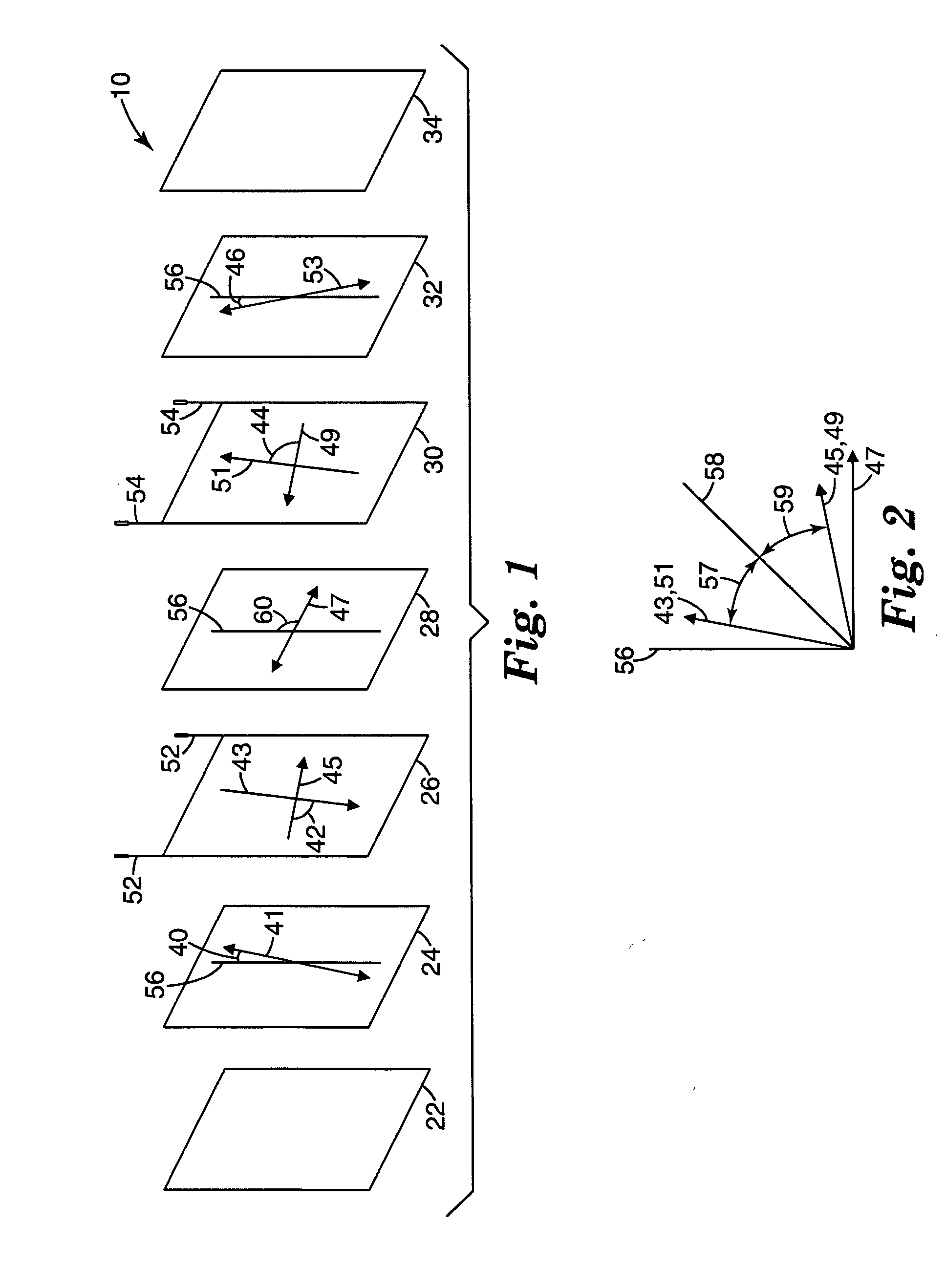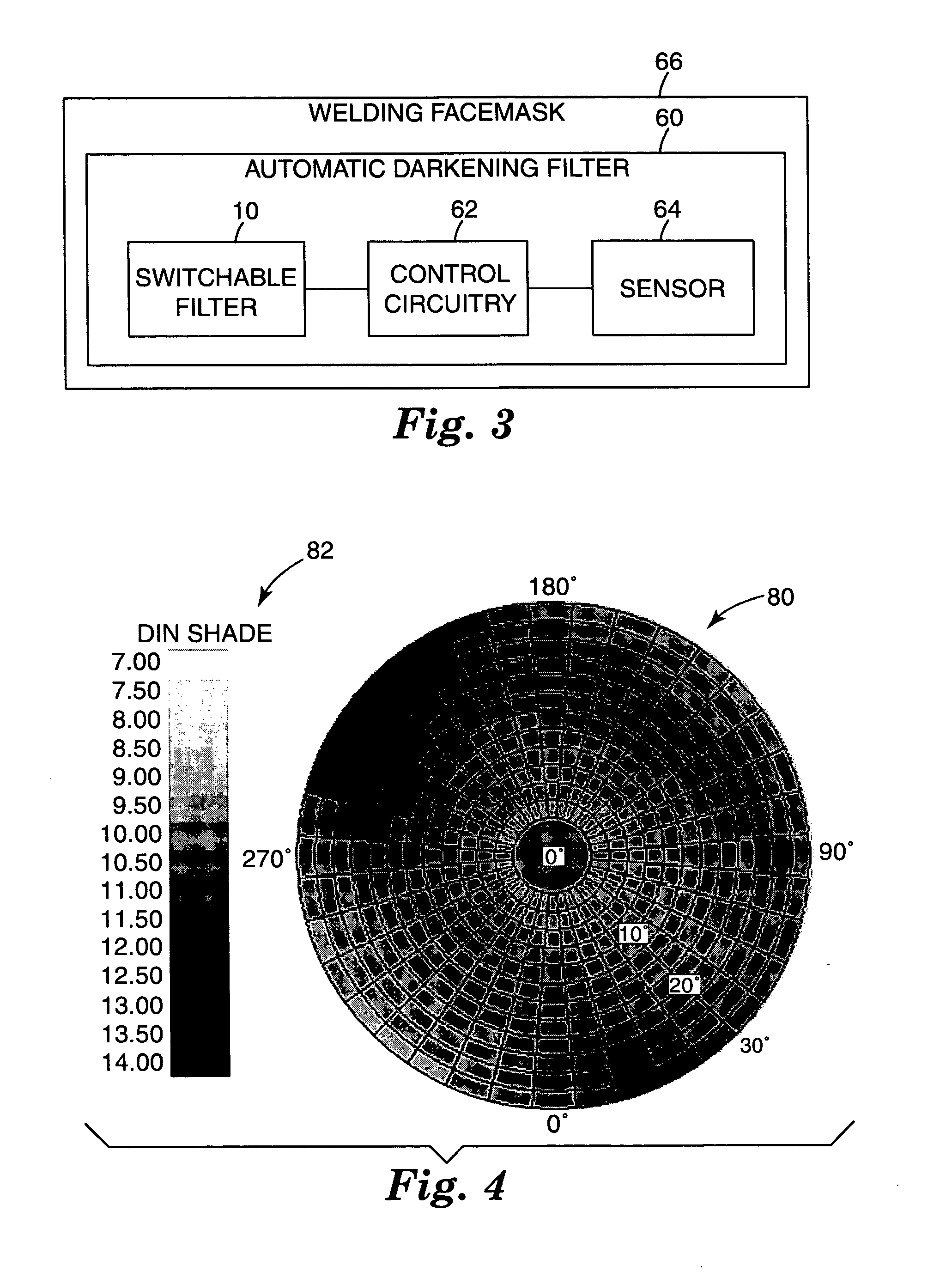Automatic darkening filter with offset polarizers
- Summary
- Abstract
- Description
- Claims
- Application Information
AI Technical Summary
Benefits of technology
Problems solved by technology
Method used
Image
Examples
Embodiment Construction
[0014]FIG. 1 is an exploded view of an example embodiment of a switchable filter construction 10 that is useful for automatic darkening filter applications. The outermost component is an interference filter 22, which filter functions in part to eliminate UV light and IR light and limits the wavelength range. Filter 10 also includes a first polarizing filter 24, a first optically rotating liquid crystal cell 26, a second polarizing filter 28, a second optically rotating liquid crystal cell 30, and a third polarizing filter 32. The arrangement may optionally also include a so-called guest-host-cell 34.
[0015] First and second liquid crystal cells 26 and 30 are low twist liquid crystal cells. As used in this document, the term “low twist” means having a twist angle of less than 90 degrees. For example, at least one of first and second liquid crystal cell 26 or 30 has a twist angle of less than 90 degrees, typically zero or 1 to 89 degrees. More specifically, the twist angle of at least...
PUM
 Login to View More
Login to View More Abstract
Description
Claims
Application Information
 Login to View More
Login to View More - R&D
- Intellectual Property
- Life Sciences
- Materials
- Tech Scout
- Unparalleled Data Quality
- Higher Quality Content
- 60% Fewer Hallucinations
Browse by: Latest US Patents, China's latest patents, Technical Efficacy Thesaurus, Application Domain, Technology Topic, Popular Technical Reports.
© 2025 PatSnap. All rights reserved.Legal|Privacy policy|Modern Slavery Act Transparency Statement|Sitemap|About US| Contact US: help@patsnap.com



